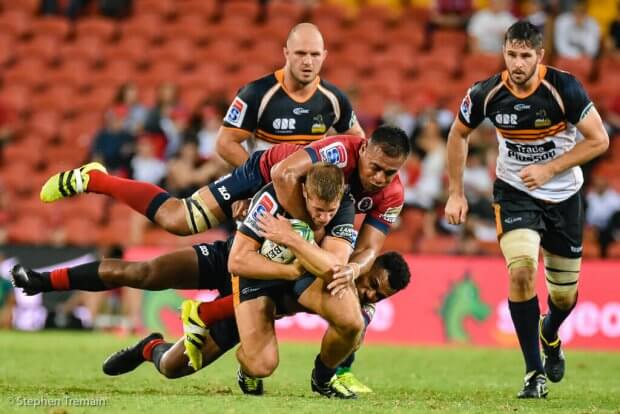2018 in Super Rugby was in many ways a transitional year for Australian teams. Due to international player contracts often being timed to expire at the end of World Cups, it has become the case that Super Rugby also follows the four-year World Cup cycle to some extent. Waratahs coach Daryl Gibson said as much on Tuesday, “we’re going to go through a period where we’ve got to rebuild that [playing depth] after the World Cup, if we sustain the losses we believe we will.”
Many long-serving Australian players have already confirmed their intentions to depart at the end of the 2019 season including Nick Phipps, Rory Arnold, Sam Carter, and Curtis Rona. Core players such as Bernard Foley, Kurtley Beale, David Pocock and Adam Coleman are coming off contract this year with no hard plans in place for their future. The traffic is not entirely one way, and some players who were previously out of the picture have also made their return to vie for selection in the World Cup squad such as Adam Ashley-Cooper, Quade Cooper, and Karmichael Hunt.
As a result, this is a key year for several Australian Super Rugby squads to make an impression before they are forced to begin a rebuilding phase. The 2019 season will also feature Wallaby stars being rested for the World Cup which will impact the star-studded Rebels and Waratahs most of all, especially in positions where developing talent has not been actively fostered. A lot will depend on how many games key players are rested for and how strategically this is done.
World Cup years are also historically bad years for New Zealand teams. Despite constant praise for the depth of New Zealand rugby, they suffer not only when All Blacks are rested but also when their star players play at less than their best. Arguably, this has been the case in the past two World Cup years. The only time the Crusaders haven’t made the finals series in the past 17 years was 2015. The Highlanders won their only title that year – but they had only 3 All Blacks in their squad. In 2011 the Reds won their first title in 16 years of Super Rugby. It seems likely that a team with fewer international players will lift the trophy at the 2019 season’s end.
With all this in mind, as well as the positive news that there have not been any major changes for the Australian Super Rugby teams between the 2018 and 2019 seasons (as opposed to the 2017 and 2018 seasons, when we lost an entire franchise as well as three coaches!), this is a good time to look at the statistical strengths and weaknesses of each team and determine their key areas of focus.
NSW Waratahs
Daryl Gibson’s transition of the squad from the big bullies of Cheika’s tenure to more athletic, heads-up players began to reap dividends last year culminating in a semi-final appearance. This was despite them only managing to beat one NZ team (the Highlanders) despite playing four of them (the Crusaders game remains contentious). When core Wallabies such as Sekope Kepu, Tolu Latu, Michael Hooper, Nick Phipps, Bernard Foley, and Kurtley Beale are rested (Gibson hinted on Tuesday that they might come off the bench against the Hurricanes this weekend), the Waratahs have already been blooding Shute Shield talent with players like Harry Johnson-Holmes, Damian Fitzpatrick, Will Miller, and Jake Gordon all impressing in 2018. The depth created by the signings of Karmichael Hunt, Le Roux Roets, Adam Ashley-Cooper, and the return of Jack Dempsey will relegate energetic players such as Ned Hanigan and Curtis Rona to the bench, which will have a positive effect on the squad’s consistency and ability to play the full 80 minutes.
It is only in the playmaking positions where Gibson has failed to give playing time to up-and-coming players. Bernard Foley and Kurtley Beale started at 10 and 12 respectively in all 18 games last year. When they did include a third playmaker in the 23, this was usually Bryce Hegarty who has now moved to the Reds. Mack Mason is the next in line, having been with the Waratahs for two full seasons but in that time playing only two games. Foley was the highest points scorer in Super Rugby last year while Beale had the fourth-most carries, and much of the Waratahs’ 2019 success will depend upon their joint availability. Additionally, while the Waratahs were the third-highest try scorers in 2018, this was built on the back of the departed Taqele Naiyorovoro. The monster winger was the tied second-highest try scorer (managing 15 meat pies), the second-highest in clean breaks (with 42), and the highest in metres carried (1,478m). Though Israel Folau also performed well in the attacking stats, he cannot be expected to shoulder the entire burden for the Waratahs’ backline.
The Waratahs’ ability to win rucks is dead last at 94% despite having Wallaby captain Michael Hooper in the openside flanker jersey. While committing fewer players to the ruck could be considered a trade-off for the benefits gained in attack, the boys in blue need to support the ball carrier with greater enthusiasm if they want to edge out the tight games.
It remains to be seen how the loss of their home ground will affect the Waratahs. This pundit is particularly grateful at the decision to host a match in Newcastle, sadly Australian sides typically have a poor track record in the Steel City. While Allianz Stadium was never much of a fortress, it is hard to imagine that playing eight “home” games in four different stadia will create much of a home ground advantage.
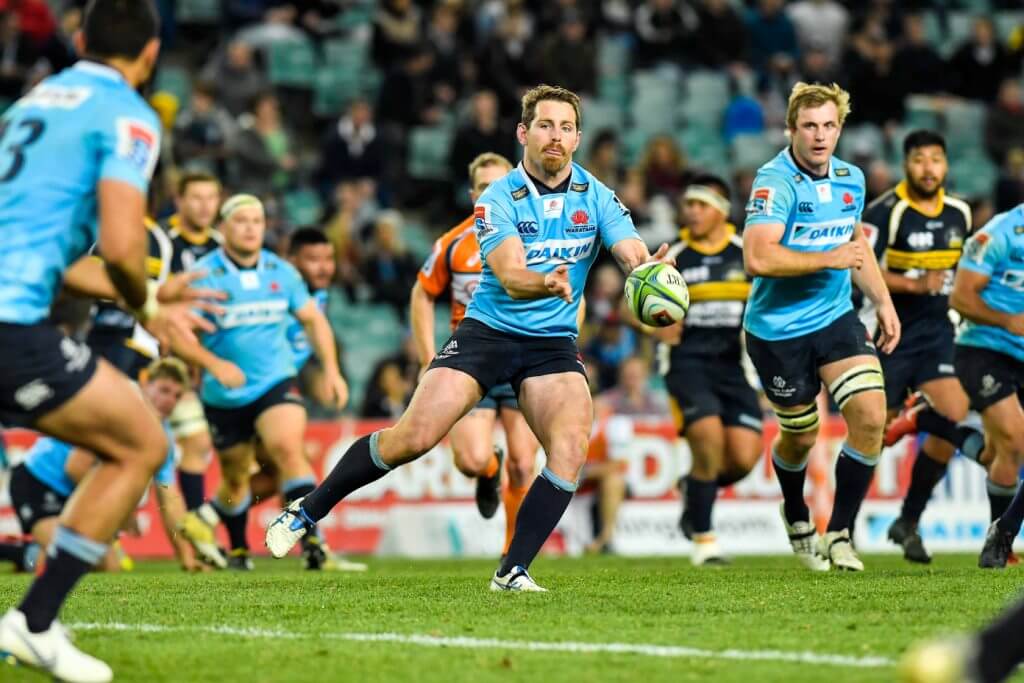
Waratahs key points:
- Find a new attacking weapon to replace Naiyorovoro
- Be faster to the breakdown
- Develop Mack Mason for when Bernard Foley and Kurtley Beale are rested or injured
- No real home ground advantage
Brumbies
In 2018, the Brumbies failed to make the finals for the first time since 2012. Despite this, the Brumbies are still strong contenders for the Super Rugby title in 2019. The few star players who are likely to be rested within the Brumbies’ setup have adequate cover. 2018 was coach Dan McKellar’s first year in charge of the squad after a 2017 season under Stephen Larkham which featured the lowest number of points scored per game by the team since 2007 (an average of 21). Since then, the team has done some soul-searching and come to the realisation that they need to be able to score points in open play.
Unfortunately the team suffered from a slow start to their season, with early losses to all of their Australian rivals in the first five games of 2018. Their points-scoring ability picked up towards the tail end of the season where they achieved solid victories over the Waratahs, Reds, and Hurricanes later in the year. They were also unlucky in games against the Chiefs and Crusaders. The Brumbies’ try-scoring average doubled over the course of the year, going from 2.5 tries per game in their first 5 games to 5 tries per game in the last 5 games. Tom Banks scored six tries in the Brumbies’ last six games, however after making his Test debut in 2018 the threat that he poses will be better identified and he will require support from the other outside backs. Due to a lack of genuine threat from the rest of the Brumbies’ backline they were tied last for defenders beaten last season. The signing of Toni Pulu may provide exactly the additional threat necessary for the Brumbies’ back three, and Tevita Kuridrani’s pre-season form is also very promising with four tries in two trial games.
The traditional strength of the Brumbies in recent years has been the driving maul off the back of an attacking lineout, and though 2018 saw shifts into other facets of gameplay they need to be careful not to let this slip. Rory Arnold won 62 lineouts last year, the second-highest in Super Rugby, and the Brumbies need to continue to utilise this potent weapon despite the losses of brother Richie Arnold and backrower Isi Naisarani simply because it is so indefensible when correctly executed. The addition of Wallaby Pete Samu should enable them to sustain their power in the backrow and the lineout, which stood at a respectable 87.1% win rate last season. The Brumbies need to start the 2019 season better than 2018, but with their first four games being against New Zealand teams and the Rebels (who they were unable to defeat in 2018) this presents a significant challenge.
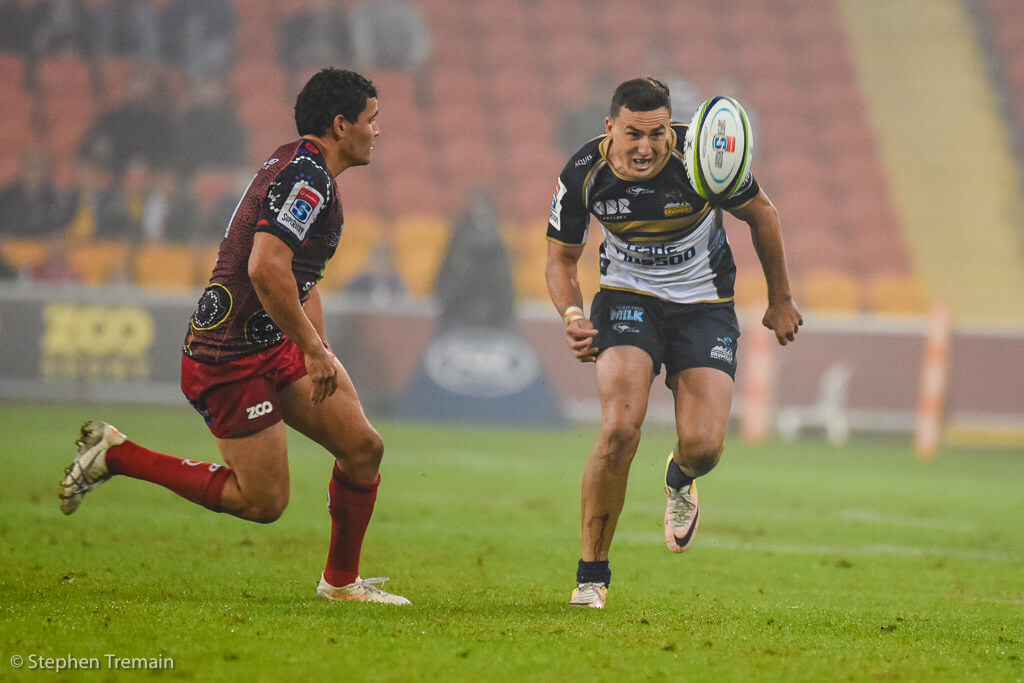
Brumbies key points:
- Start scoring points across the park from the outset despite a difficult early season draw
- Continue to use the driving maul as an attacking weapon
- Utilise but also support Tom Banks in open play
Melbourne Rebels
The prediction made by many pundits that the injection of a host of Western Force playing (and coaching) talent would catapult the Rebels to the top of the Australian conference in 2018 proved to be incorrect. The Rebels ended the season with only one more win than the Queensland Reds, who probably spent half as much cash on the playing talent that they utilised. The Rebels were lucky to finish above the Brumbies in the Australian conference by scoring 47 more points throughout the season, having conceding 39 more points. On the other hand, 2018 was the best ever season for the Melbournian team, and their thrilling start to the season stacked with bonus point wins showed that it is consistency rather than talent that’s lacking.
The injection of new talent with players such as Isi Naisarani, Quade Cooper, and Matt Toomua joining the squad is bound to boost the squad after they lost their last 3 matches in 2018. Unfortunately, there will be losers due to the overlapping talents of the 11-15 signings which include Reece Hodge, Tom English, Billy Meakes, Marika Koroibete, Dane Haylett-Petty, Jack Maddocks, Campbell Magnay, and Matt Toomua. It’s no wonder they let Sefa Naivalu go – despite being a Wallabies starter, he barely saw any game time with the Rebels in 2018.
The strength of this Rebels’ side definitely lies with their flashy backline, and Dave Wessels has proven capable of innovating and training intricate set piece attacking plays. The loss of barnstorming number 8 Amanaki Mafi (who had the most carries in Super Rugby) will hurt their ability to attack from the base of the scrum. Additionally, the Rebels were not as successful in open field play, coming dead last in defenders beaten (331). They relied very heavily on Will Genia as a playmaker, and the 2019 Rebels need to make the most of their playmaking talent at flyhalf to score more points outside of the set piece.
Discipline and defence were also issues, with the Rebels first for yellow cards (tied) and penalties conceded throughout the 2018 season and dead last with regards to tackle completion rate (81.5%). The Rebels no longer have the excuse of it being their first year under a new coach with a new culture: they need to stay disciplined both legally and in defence for 80 minutes of every game if they want to push their case as title contenders.
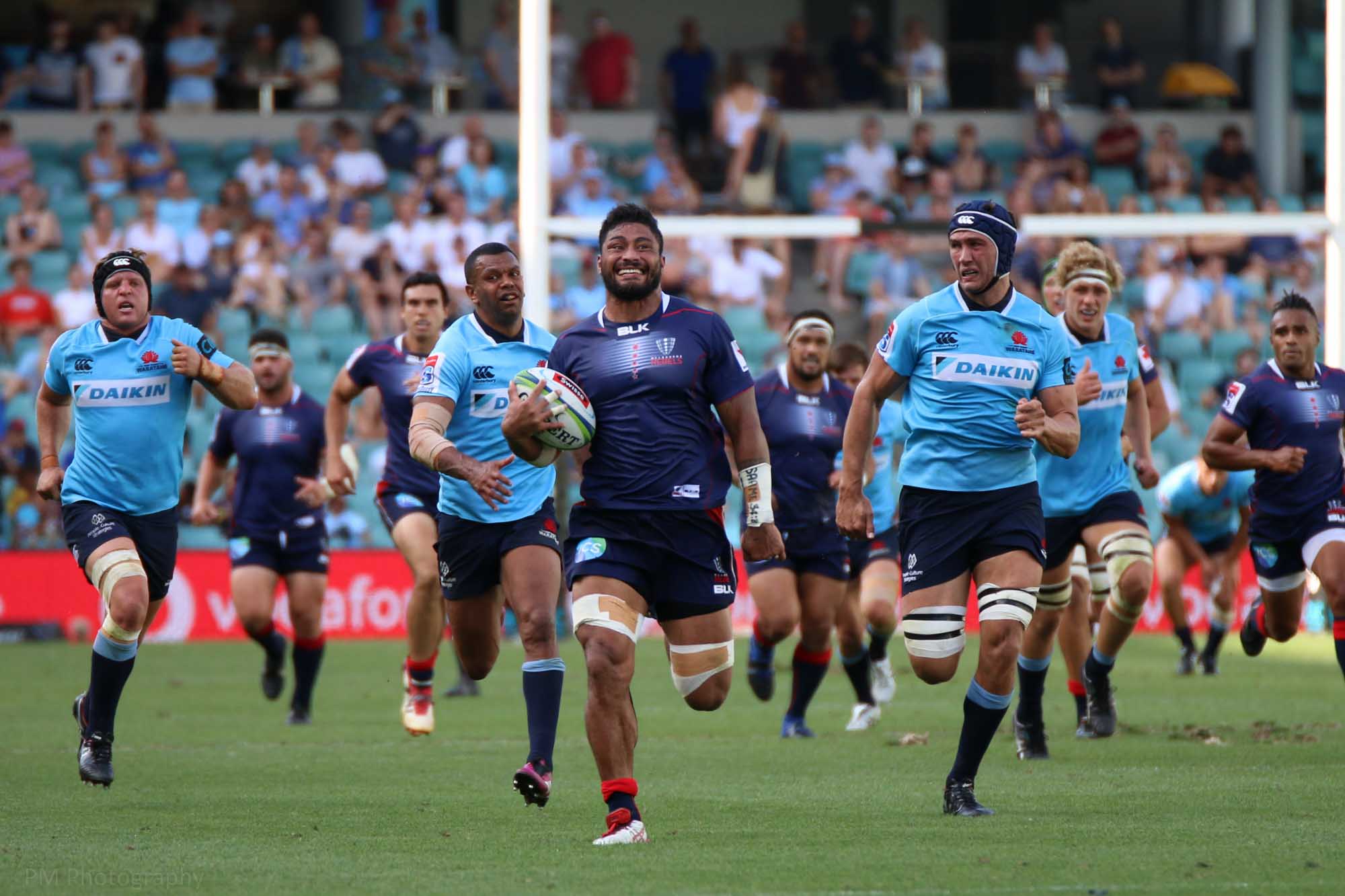
Rebels key points:
- Find a new way to make metres without Mafi
- Playmakers need to unlock star backline, particularly in open play
- Discipline needs to be improved
- Tackles need to stick
Queensland Reds
Reds fans will most likely write off 2018 as a rebuilding season. The average age of the Reds is the youngest in Super Rugby at around 23, and as a result there is the hope that even if their form doesn’t turn around overnight the gradual process of rebuilding from an era of disastrous short-term coaching appointments has finally begun.
Hamish Stewart developed with every game in 2018, though there is some concern regarding how well he will cope with primary playmaking duties now that Jono Lance has departed. Stewart had an incredibly low number of possessions per minutes compared with the other Super Rugby flyhalves last year, carrying the ball less than half as much as Bernard Foley, and is still only 20 years old. The addition of Bryce Hegarty to the squad will provide an alternative should Stewart succumb to injury or simply require some time off. The turnstile selection policy for scrumhalves also needs to stop as no flyhalf can thrive beside an unfamiliar 9.
This is the pressure point of the squad, as their forward pack is stacked with players who have shown a willingness to match it with the best such as Taniela Tupou, Brandon Paenga-Amosa, Izack Rodda, Scott Higginbotham, and Caleb Timu. Their backline is also increasingly well-supplied, with three future world-class centres in Chris Feauai-Sautia, Duncan Paia’aua, and Samu Kerevi, as well as speedy outside backs including Filipo Daugunu, Sefa Naivalu, Jordan Petaia, and Bryce Hegarty. They boasted a 91% success rate at scrum time last year, and this dominance needs to continue in 2019 as it has been the platform for what success they’ve had.
There is also the hope of seeing Taniela Tupou running rampant in the side channels. This didn’t always pay off in 2018, with Tupou often being used as a decoy option and the Reds’ poor execution causing them to end the season with the third-least tries scored (49) and the least linebreaks (152). The Reds have now had a season together under coach Brad Thorn and it will be necessary for their combinations to start clicking if they are to become a genuine threat this year.
Additionally, most of the Reds’ starting backs have a barely better than 50/50 tackle success rate. While their forward pack lifted their overall tackle success rate to 83.6% (ninth in Super Rugby) in 2018, the whole squad needs to lift to reduce the number of missed tackles. They also need to brush up on the lawbook as they had the most yellow cards in 2018 with 10 in 16 games (tied with the Rebels).
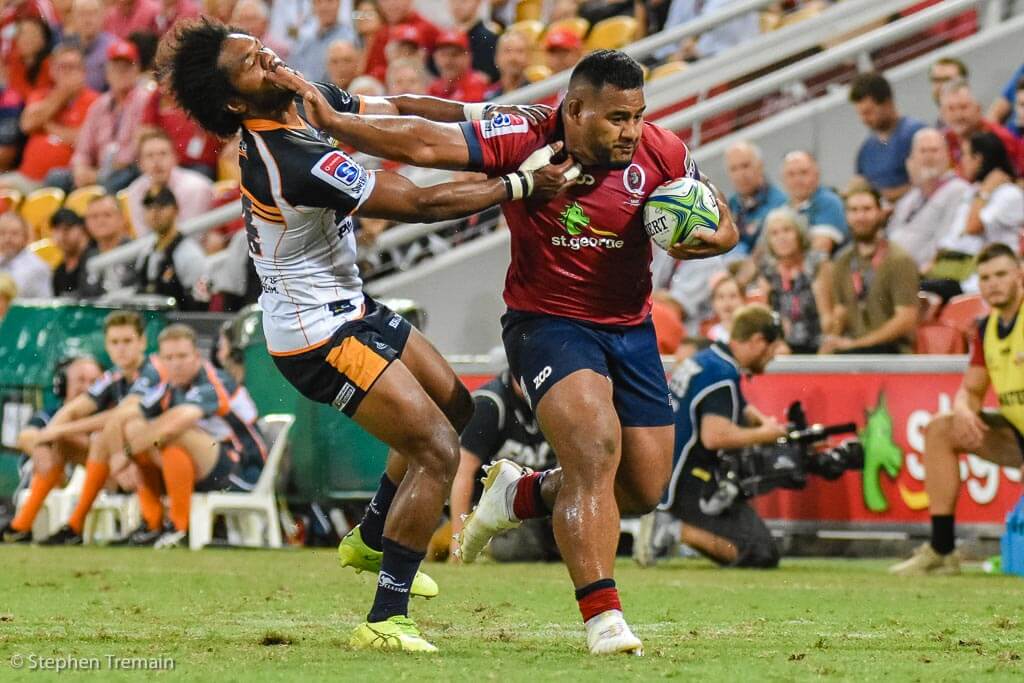
Reds key points:
- Hamish Stewart needs to step up to the level required in international rugby
- A strong attacking setup which didn’t quite click last year needs to cement their combinations in 2019
- Taniela Tupou needs to be properly utilised as an attacking runner
- Discipline needs to be improved
- Tackles need to stick

